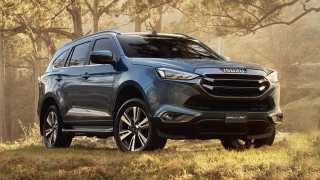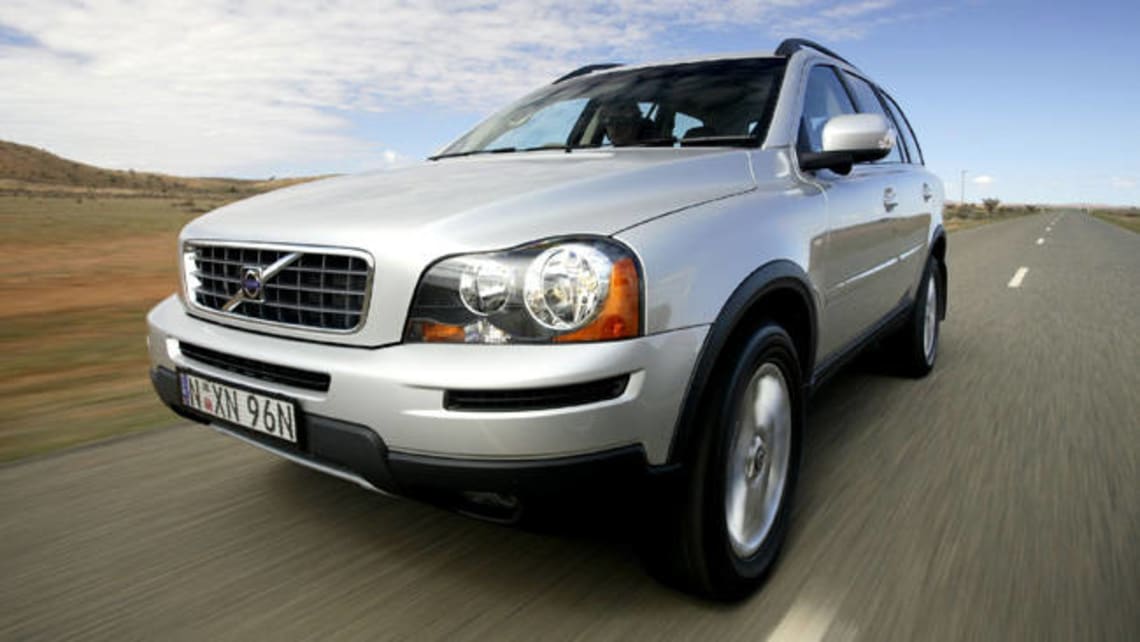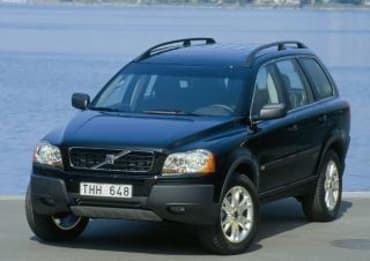
Used Volvo XC90 review: 2003-2011
- Volvo XC90
- Volvo XC90 2006
- Volvo XC90 2007
- Volvo XC90 2008
- Volvo XC90 2009
- Volvo XC90 2003
- Volvo XC90 2004
- Volvo XC90 2005
- Volvo XC90 2010
- Volvo XC90 2011
- Volvo XC90 Reviews
- Volvo Reviews
- Volvo SUV Range
- SUV
- Volvo
- Used Car Reviews
- Buying tips
- 7 seater

Volvo XC90 is a large SUV that, in a very Swedish manner, is all about sensible design and practicality.
Though its basic design goes back to 2003 it has stood the tests of time extremely well. Naturally there have been quite a few updates since its launch and we will cover these here.
The Volvo XC90’s biggest feature in the minds of the typical buyer of a family oriented SUV is its spaciousness. This is built around a cabin that sits will forward thanks to the use of a transversely mounted engine instead of the longitudinal units used by most large SUVs. Volvo assures us there are 64 seating/luggage combinations.
With the exception of the driver’s, all seats can be folded flat. The rear-seat squabs slide under the rear luggage area to minimise the space they take up when the seats are folded flat.
In what has now become a much loved feature of many Volvo models, the centre seat in the centre row can be moved forward until it almost touches the two front seats. This brings the smallest family member within easy reach of the two front occupants. The seat has a built-in child seat that can be set up in moments.
The only disadvantage of the cab-forward layout is that the front wheelarch intrudes into the front passenger’s footwell, making it rather narrow.
A practical feature of the body design is large areas of plastic protection strips, just the thing for driving through narrow bush trails, or submitting the Volvo XC90 to the dangers of shopping centre carparks.
Power is normally only to the front wheels, with the rear wheels coming into play reasonably quickly if the fronts begin to lose traction. An off-road 4WD it’s not, but the big Volvo XC90 wagon can be taken off sealed roads if driven sensibly.
On sealed roads the ride is good while the steering and suspension work well. Being a two-tonne vehicle this isn't the most nimble of vehicles, but the XC90 hangs on well in corners and you are protected by the latest in electronic traction control. This included a program that helps resist vehicle rollover.
Power was originally provided by a choice between two petrol engines. One a five-cylinder 2.5-litre turbocharged unit, the other a twin-turbo 200 kW sports model using a straight-six 3.0-litre.
In October 2006 Volvo introduced a fascinating V8 engine to the XC90 catalogue. Claimed to be the most compact V8 ever seen in a transverse installation it produces plenty of performance from its 4.4 litres.
Also included in the 2006 revamp of the range was a turbo-diesel for the first time in Australian XC90s. With a capacity of 2.4 litres it had an interesting design using five cylinders in line. Road testers praised it for its smoothness and strong torque characteristics.
In April 2007 the straight six 3.0-litre engine was expanded to 3.2 litres. The larger engine actually has less power than the smaller, but the wider spread of torque makes up for this and it's a nicely driveable unit. Due to the popularity of the six-cylinder with Aussie buyers, the smaller five-cylinder unit was discontinued at the end of that year.
Transmissions are all automatic, with four-speed and five-speed units in earlier models and six forward ratios from 2007 onwards. Volvo is long established in Australia with a dealer network that covers all metro areas as well as quite a few country centres.
Service, repair and parts costs for the XC90 are about average for a vehicle in this class and we have heard of no real complaints about the availability of spares. This is a complex vehicle and we recommend that only the simplest of repairs are carried out by owners.
Check on insurance costs with several companies as some may be unreasonably biased against turbocharged engines. This situation has changed markedly in recent years as more and more European makers are importing turbo engines to Australia.
WHAT TO LOOK FOR
Look for a continuous service history on any XC90, but particularly on turbo models. Engine oil and filter changing is important on any turbocharged engine. Listen for suspension noises, especially on rougher roads, there's no need to find a dirt road for this, many suburban roads in poor condition will show up any problems.
Automatic transmissions should be smooth and all but imperceptible on their changes at low throttle openings. Some shift feel at big openings is acceptable, but too much may indicate auto problems. Look over the body for signs of damage or crash repairs.
Check the interior, including the luggage area, for signs of hard use and damage. Very few XC90s are ever taken off-road but if you do come across one with scratches on the lower bumper corners and the door sills it has probably been used in unaccustomed areas.
CAR BUYING TIP
Shop around for finance and insurance with as much care and attention as you put into getting the best vehicle.
Pricing
| Year | Price From | Price To |
|---|---|---|
| 2011 | $8,910 | $18,480 |
| 2010 | $7,810 | $19,030 |
| 2009 | $6,050 | $17,380 |
| 2008 | $5,940 | $13,970 |
| 2007 | $5,940 | $11,220 |
| 2006 | $5,500 | $11,220 |
| 2005 | $4,730 | $9,680 |
| 2004 | $4,730 | $8,250 |
| 2003 | $4,730 | $8,250 |
Pricing guides
Range and Specs
| Vehicle | Specs | Price* | |
|---|---|---|---|
| T6 | 2.9L, PULP, 4 SP AUTO | $5,830 – 8,250 | 2003 Volvo XC90 2003 T6 Pricing and Specs |
| 2.5T | 2.5L, PULP, 5 SP AUTO | $4,730 – 6,930 | 2003 Volvo XC90 2003 2.5T Pricing and Specs |
$4,730
Lowest price, based on third party pricing data







